
Terek Cossacks in Photos
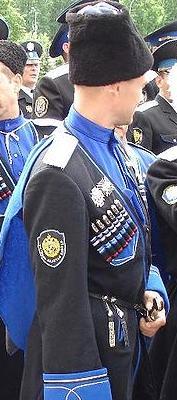
This photo is of a modern Terek Cossack. Obviously the dress is rather more ornate than anyone actually wore in battle. It is included to show the colour of blue that appears to be the Host colour. Although called "light blue" in the sources, it is clearly not that light and presunably the term was merely to distinguish it from the much darker blue of the Don and other units.
Cavalry
It can be hard to tell cavalry from infantry in photographs, since the basic uniform is identical and only shoulder markings give the difference. Generally a sabre (as well as dagger) would indicate cavalry, and rifles indicate infantry, but this is not sure fire.
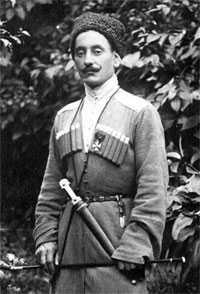
A commander of the 2nd Mountain Mozdok regiment.
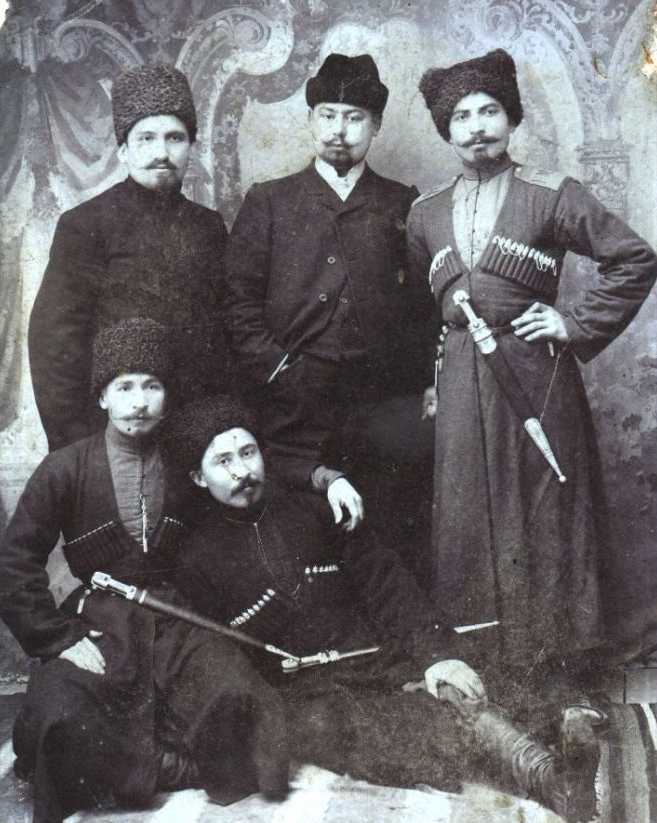
The man on the far right has a Г-М for the pre-war Mountain-Mozdok Regiment. Asiatic features were quite common, as many mountaineers and nomadic tribesmen were incorporated into the Cossacks over time.

A Mountain Mozdok private, judging by the cipher. Although originally designed to carry cartridges, the chest bands were rarely actually used that way by the 20th Century.
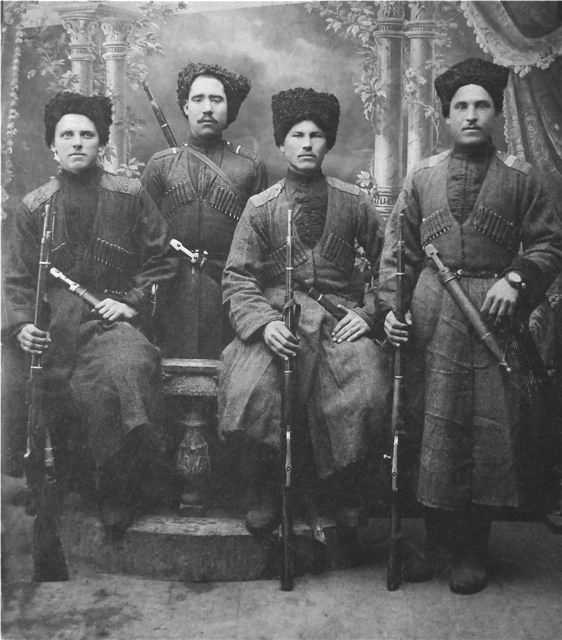
Privates and NCOs of the 2nd Sunzhenko-Vladikavkaz Regiment. The rank markings on the sewn-on shoulderboards are very obvious.
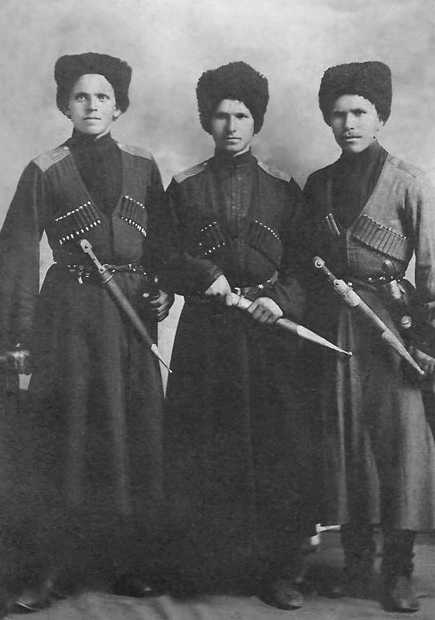
Troopers of the 2nd Sunzhenko-Vladikavkaz Regiment. The lack of moustaches is unusual.
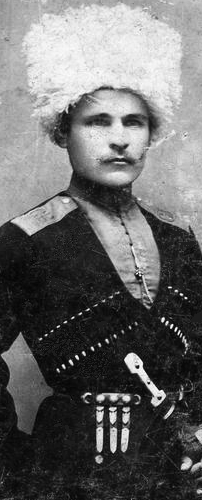
The С-В on the shoulderboards suggests a private in the Sunzhensk-Vlaikavkaz Regiment prior to WWI. White papakha don't seem very sensible as military gear, but were common enough.
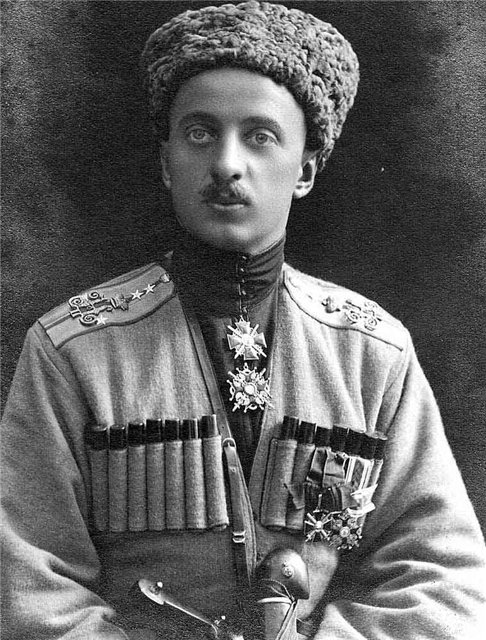
Said to be a Kizlyar-Grebenski Cossack. This is consistent with being in the 1st Regiment after 1915, as the monogram is that of Nicholas II. The rank is Staff Captain. Note the ornamental pieces in the chest cartridge holders in his case are plain wood, where richer men often went for ornate silver versions.
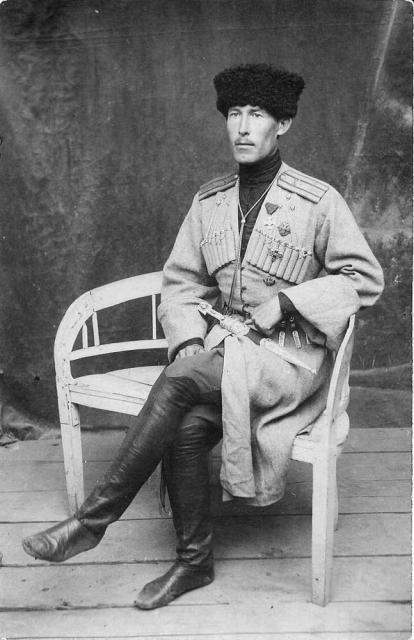
Viktor Tokarev. He would appear to have the monogram A of the 1st Volga Regiment, although it is a bit hard to see. Note the high boots, with virtually no heel.
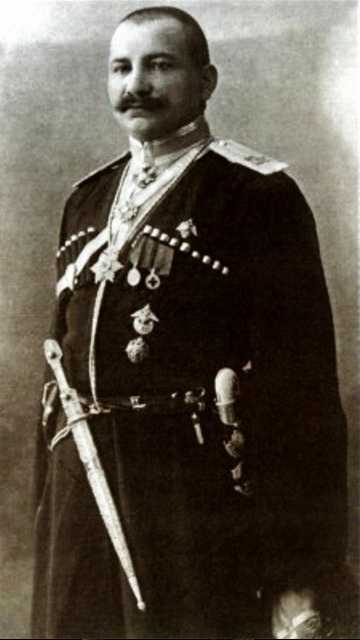
Colonel of the 2nd Volga Regiment prior to WWI. It was normal for all Cossacks to shave their hair very short. Some, especially the younger men, kept one long lock in the traditional manner of Asiatic horse nomads.
Plastoons
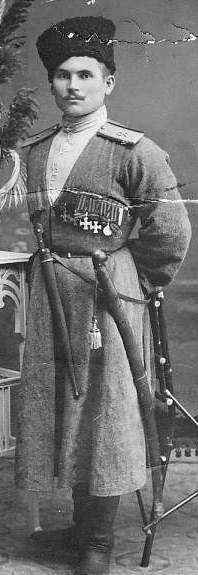
A Terek Plastoon of the 2nd Battalion. The number 2 appears clearly on his shoulderboard.